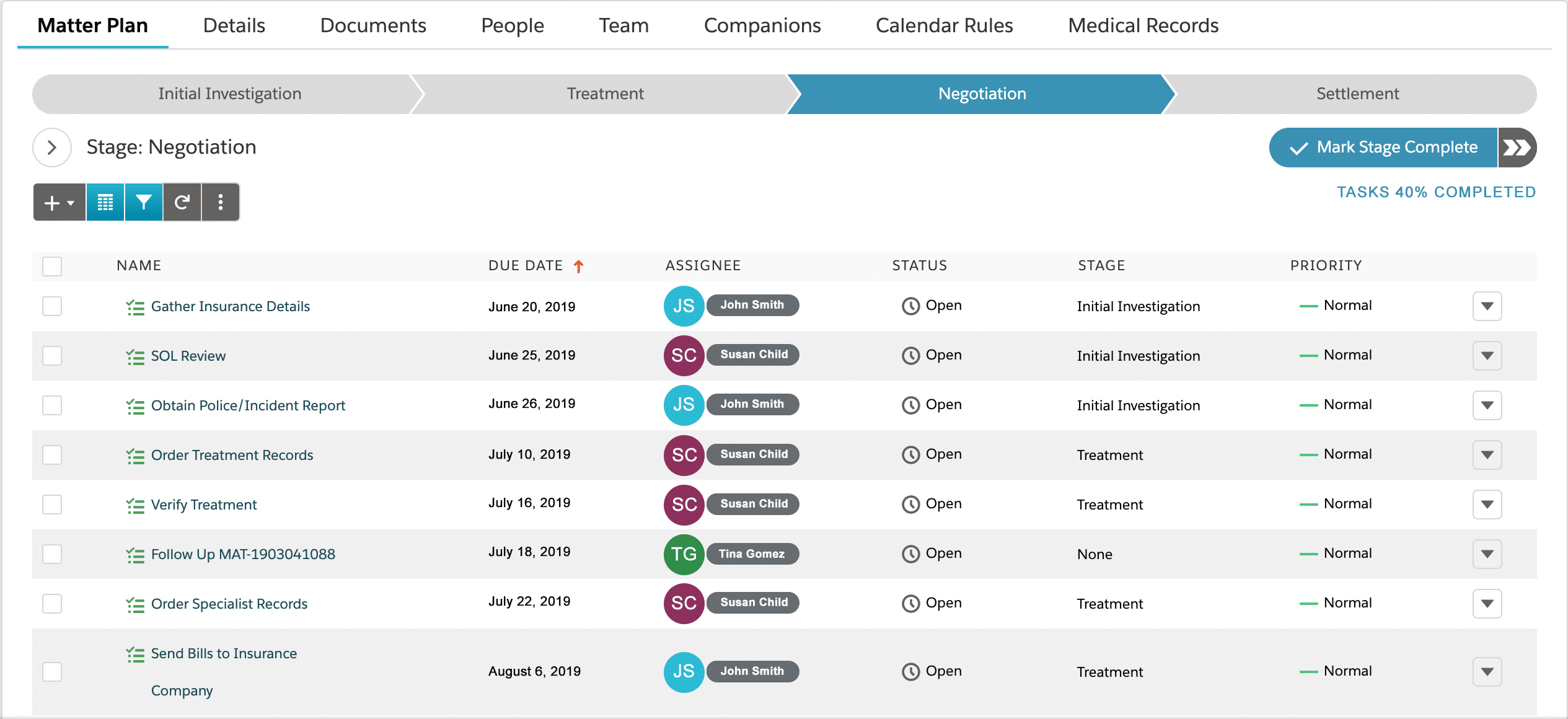Litify: Complete Buyer's Guide
Specialized legal technology platform for personal injury and litigation firms
Litify is a specialized legal technology platform that combines comprehensive case management with AI-powered document analysis, built specifically for personal injury and litigation firms. Litify positions itself as more than a traditional case management system by integrating AI capabilities developed through partnerships with Amazon Web Services and Anthropic, announced in August 2024[45][57].
Market Position & Maturity
Market Standing
Litify occupies a specialized position within the legal technology market, focusing specifically on personal injury and litigation firms rather than competing as a generalist platform.
Company Maturity
The vendor's market maturity is evidenced by successful enterprise-scale implementations, including a major insurance defense law firm with over 1000 employees across 44 locations[54].
Growth Trajectory
The company's inclusion on both the 2024 Inc. 5000 and Deloitte Technology Fast 500 lists demonstrates substantial growth trajectory and market validation[58][59].
Industry Recognition
Industry recognition extends beyond growth metrics to include customer success validation, with documented case studies showing measurable improvements in processing times, conversion rates, and operational efficiency[53].
Strategic Partnerships
Strategic partnerships with Amazon Web Services and Anthropic position Litify within the enterprise AI ecosystem, providing access to cutting-edge AI capabilities while maintaining security standards required for legal applications[57].
Longevity Assessment
Long-term viability indicators include the platform's responsible AI development approach and security-first architecture that address evolving regulatory requirements in legal technology.
Proof of Capabilities
Customer Evidence
Enterprise-scale customer validation demonstrates Litify's capability to handle complex legal operations, with a major insurance defense law firm successfully implementing the platform across 1000+ employees and 44 locations[54].
Quantified Outcomes
Phillips Law achieved significant reduction in intake processing time and documented cost savings through task automation[53]. Taylor King Law reported measurable improvements in intake conversion rates and attorney fees, while Angel Reyes & Associates attributed substantial growth to platform capabilities[53].
Case Study Analysis
Technical performance validation shows the platform's AI capabilities delivering real business impact. The automated document analysis functionality successfully processes medical bills to extract insights and populate relevant case file fields, making information accessible for reporting and automated workflows[45][47].
Market Validation
Market validation indicators include the company's recognition on both the 2024 Inc. 5000 and Deloitte Technology Fast 500 lists, demonstrating substantial growth and market acceptance[58][59].
Competitive Wins
Competitive wins evidence emerges from the platform's specialized focus on personal injury and litigation workflows, enabling deeper functionality compared to generalist legal AI platforms.
Reference Customers
Reference customer diversity spans from individual practices to large multi-location firms, demonstrating platform flexibility across different organizational scales.
AI Technology
Litify's AI architecture represents a sophisticated approach to legal technology, built on Anthropic's Claude 3 model family accessed through Amazon Bedrock, ensuring both advanced AI capabilities and enterprise-grade security[57].
Architecture
The platform employs single-tenant architecture that maintains client data in isolated environments, addressing critical confidentiality requirements that distinguish legal AI from general business applications.
Primary Competitors
Primary competitors include Thomson Reuters CoCounsel and LexisNexis CounselLink+ for enterprise legal AI capabilities[34][35], Smokeball AI for mid-market case management with AI features[16], and LEAP for customizable legal practice management[27].
Competitive Advantages
Competitive advantages center on specialization in personal injury and litigation workflows that provides deeper functionality than generalist platforms serving multiple practice areas[45][57]. The security-first approach through AWS and Anthropic partnerships addresses critical legal industry data privacy concerns that competitors may not match[57].
Market Positioning
Market positioning emphasizes specialized workflow optimization over broad market appeal.
Win/Loss Scenarios
Win/loss scenarios favor Litify when personal injury specialization outweighs technical risk tolerance and organizations can commit to Salesforce infrastructure.
Key Features

Pros & Cons
Use Cases
Integrations
Pricing
Featured In Articles
Comprehensive analysis of AI Smart Templates for Client Updates for Legal/Law Firm AI Tools for Legal/Law Firm AI Tools professionals. Expert evaluation of features, pricing, and implementation.
How We Researched This Guide
About This Guide: This comprehensive analysis is based on extensive competitive intelligence and real-world implementation data from leading AI vendors. StayModern updates this guide quarterly to reflect market developments and vendor performance changes.
59+ verified sources per analysis including official documentation, customer reviews, analyst reports, and industry publications.
- • Vendor documentation & whitepapers
- • Customer testimonials & case studies
- • Third-party analyst assessments
- • Industry benchmarking reports
Standardized assessment framework across 8 key dimensions for objective comparison.
- • Technology capabilities & architecture
- • Market position & customer evidence
- • Implementation experience & support
- • Pricing value & competitive position
Research is refreshed every 90 days to capture market changes and new vendor capabilities.
- • New product releases & features
- • Market positioning changes
- • Customer feedback integration
- • Competitive landscape shifts
Every claim is source-linked with direct citations to original materials for verification.
- • Clickable citation links
- • Original source attribution
- • Date stamps for currency
- • Quality score validation
Analysis follows systematic research protocols with consistent evaluation frameworks.
- • Standardized assessment criteria
- • Multi-source verification process
- • Consistent evaluation methodology
- • Quality assurance protocols
Buyer-focused analysis with transparent methodology and factual accuracy commitment.
- • Objective comparative analysis
- • Transparent research methodology
- • Factual accuracy commitment
- • Continuous quality improvement
Quality Commitment: If you find any inaccuracies in our analysis on this page, please contact us at research@staymodern.ai. We're committed to maintaining the highest standards of research integrity and will investigate and correct any issues promptly.